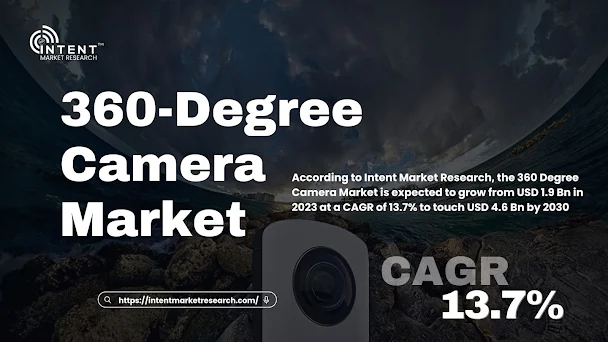The global inboard engines market is experiencing robust growth, driven by technological advancements, increasing marine transportation demands, and evolving marine recreational activities. As per Intent Market Research, the market demonstrated significant potential, with a valuation of USD 1.5 billion in 2023 and projected to surpass USD 2.5 billion by 2030, representing a compelling Compound Annual Growth Rate (CAGR) of 7.8% during the 2024-2030 forecast period.
Market Dynamics
The inboard engines market is witnessing transformative dynamics propelled by multiple interconnected factors. Technological innovations are fundamentally reshaping marine propulsion systems, with manufacturers focusing on developing more fuel-efficient, environmentally sustainable, and performance-optimized engines. The increasing demand from marine recreational sectors, including luxury yachting, sport fishing, and pleasure boating, is significantly contributing to market expansion. Moreover, stringent environmental regulations mandating reduced emissions and improved fuel efficiency are compelling engine manufacturers to invest heavily in research and development of cleaner propulsion technologies.
Simultaneously, the global maritime industry's continuous evolution is creating substantial opportunities for inboard engine manufacturers. Emerging markets are experiencing heightened maritime activity, with increasing investments in marine infrastructure, naval capabilities, and commercial shipping fleets. The rising trend of marine tourism, coupled with growing disposable incomes in developing economies, is further accelerating market growth. Manufacturers are strategically responding by developing more compact, lightweight, and technologically advanced inboard engines that cater to diverse marine applications while meeting increasingly stringent environmental and performance standards.
Access Full Report @ https://intentmarketresearch.com/latest-reports/inboard-engines-market-4200.html
Market Opportunities
The inboard engines market presents numerous promising opportunities for strategic growth and innovation. The ongoing transition towards electrification and hybrid propulsion technologies represents a significant frontier for market participants. Manufacturers investing in developing high-efficiency, low-emission electric and hybrid inboard engines are positioned to capture emerging market segments. The marine renewable energy sector, particularly offshore wind and marine research vessels, offers substantial potential for specialized inboard engine solutions. Additionally, the increasing demand for autonomous marine vehicles and advanced marine robotics creates novel application domains for sophisticated inboard engine technologies.
Technological advancements such as integration of artificial intelligence, advanced materials engineering, and predictive maintenance capabilities are expected to differentiate market players. The convergence of digital technologies with marine propulsion systems will likely drive innovation, enabling more intelligent, efficient, and adaptable inboard engine solutions.
Key market players including Volvo Penta, Mercury Marine, Yamaha Marine, Suzuki Marine, and Cummins Marine are actively investing in research and development to maintain competitive advantages. Strategic collaborations, mergers, acquisitions, and continuous technological refinement will be critical in navigating the complex and dynamic landscape of the inboard engines market.
The projected market growth reflects a promising trajectory, underpinned by technological innovation, evolving consumer preferences, and the marine industry's continuous transformation. As environmental consciousness grows and marine technologies advance, the inboard engines market stands poised for substantial expansion and technological evolution.
Market Segmentation
The inboard engines market can be comprehensively segmented across multiple dimensions:
By Power Output
- Low Power (0-100 HP)
- Medium Power (100-300 HP)
- High Power (300-500 HP)
- Very High Power (500+ HP)
By Application
- Recreational Boats
- Commercial Vessels
- Fishing Boats
- Military Marine Vessels
- Passenger Ships
By Fuel Type
- Diesel Engines
- Gasoline Engines
- Hybrid Propulsion Systems
- Alternative Fuel Engines
By Region
- North America
- Europe
- Asia-Pacific
- Latin America
- Middle East and Africa
Download Sample Report @ https://intentmarketresearch.com/request-sample/inboard-engines-market-4200.html
About Us
Intent Market Research (IMR) is dedicated to delivering distinctive market insights, focusing on the sustainable and inclusive growth of our clients. We provide in-depth market research reports and consulting services, empowering businesses to make informed, data-driven decisions.
Our market intelligence reports are grounded in factual and relevant insights across various industries, including chemicals & materials, healthcare, food & beverage, automotive & transportation, energy & power, packaging, industrial equipment, building & construction, aerospace & defense, and semiconductor & electronics, among others.
We adopt a highly collaborative approach, partnering closely with clients to drive transformative changes that benefit all stakeholders. With a strong commitment to innovation, we aim to help businesses expand, build sustainable advantages, and create meaningful, positive impacts.
Contact Us
sales@intentmarketresearch.com
US: +1 463-583-2713








.jpg)


.jpg)